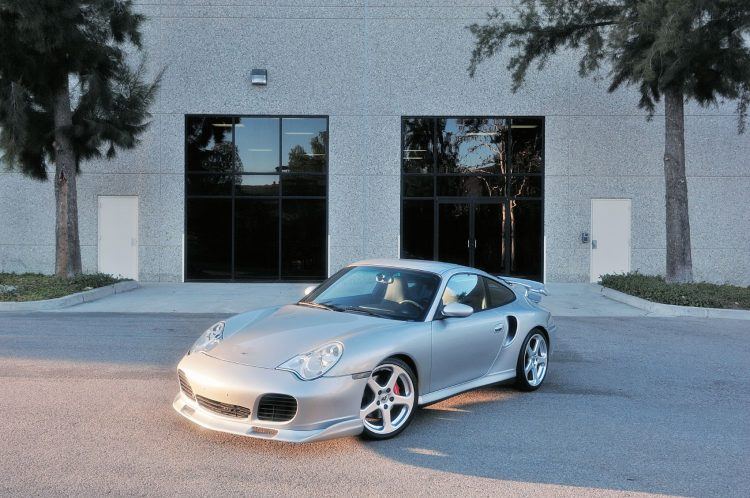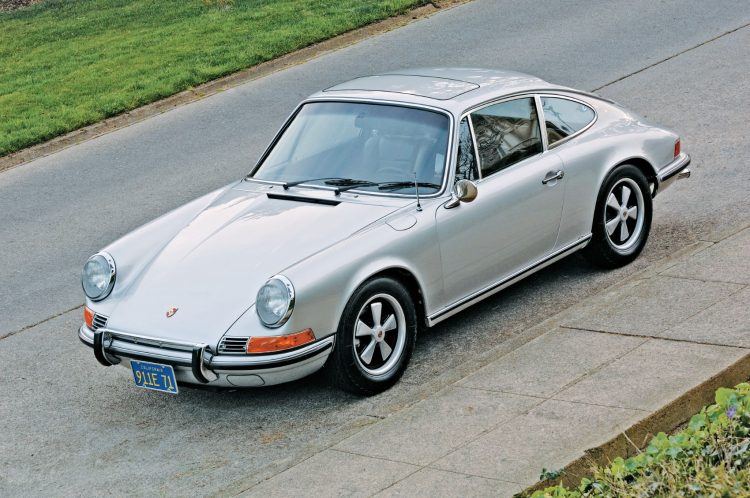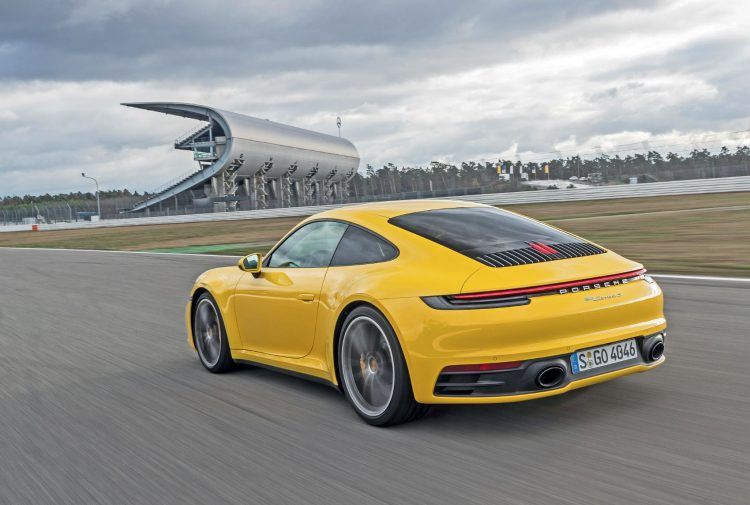- Porsche fans will appreciate this insightful book packed full of wonderful photos.
- Author Randy Leffingwell takes us through the history of Stuttgart’s most famous car.
- Our Book Garage series showcases what every gearhead and enthusiast should add to their library.
Icon is a word thrown around all to easily these days. You find undeserving people in the music business baptized icons, half-baked actors christened icons and, as far as we’re concerned, souped-up econo-boxes now dubbed automotive icons. It dilutes the word if you overuse it like that. People call the Porsche 911 an icon, and in this case, they are 100 percent right. And in case you doubt it, you should pick up and read Randy Leffingwell’s tome, The Complete Book of Porsche 911: Every Model Since 1964.
A Big Bundle of Porsche Goodness
I live in an old house, a church, actually, that was built in 1906. One of the more distinguishing features, besides being church-shaped and having the dry-wood combustibility of a box of matches, is the front door. It’s this huge, red-painted oak situation supported by iron hinges most likely sourced from Minas Tirith. The whole thing must weigh as much as a VW Jetta being it’s four inches thick. It is, to use the parlance, impressive. It pivots open on iron hinges with a creaking and groaning and cracking of reports like something out of a vintage horror movie.
But the other day it didn’t.
I was going to do something prosaic like buy milk and when I went to open the door; it made it about 10 inches then softly thudded to a stop. I took another run at it, and again it softly thudded to a stop. I could just fit my head out to see what was up, and there was this huge yellow-padded envelope. Whatever resided within had enough weight and mass to stop the door like a wedged battle ax.
“The heck is that?” I mumbled to myself as I walked to the far side of the place, using a different door to leave. I got to the front, hefted the package up (thought it might contain a manhole cover), and tore it open to find a new copy of Leffingwell’s, The Complete Book of Porsche 911 – Every Model Since 1964. This is what was blocking my door. It’s not exactly a big book either at 345 pages. All I can think of is that its mass is down to the quality of the paper.
And the quality of the content.
Visual Delight
Everything about this book is well-thought-out and beautifully executed. From the inner front cover, which is done up in the same psychedelic warped checkerboard pattern that graced the seats of late 60s Porsches, to the carbon fiber style end cover. Visually speaking, the book’s two covers alone give you an idea of the framework within. Sprawling across the intervening pages is a well-told and very well-photographed story of a true automotive icon: The Porsche 911.
Most of the early photographs have this wonderful palladium tone to their black and white printing. At first I thought they were vintage shots from back in the day, then I realized there were modern buildings in the background. Apart from the occasional credit to a specific photographer or to Porsche Press, Leffingwell himself did the bulk of the shooting here. Bravo!
Related: Porsche versus the S&P: Can this classic sports car top the stock market?
From The Top
The photography follows, in part, because Leffingwell is best known as a shooter, although his writing is pretty durn good too. He starts further back; a little bit before the actual beginning of the 911, covering “Predecessors and Prototypes, 1948 – 1965” in the introduction. So stuff like 356s and speedsters and Gmund coupes lay the foundation for the glories to come. The 911 was a wickedly-simple and Germanic answer to a very basic question: How can we make the 356 better?
The answer, as any Porsche fan worth their sense of superiority can tell you, was this. Ditch the VW Bug floor plan, ditch the VW four-banger, start with a clean sheet of paper but use the same basic layout. The fundamentals that made the 356 such a blast to begin with should work here. Lightweight and low center of gravity; lose the agricultural suspension for a higher-tech torsion bar setup and, most importantly, keep the engine hanging out back.
50 lbs. of Pig Iron
Yes, like all other lovers of the 911, Leffingwell more or less glosses over that putting the engine way back there leads to some handling issues and deficiencies. I’m sorry, I should say “frightening handling quirks” that make 911s (especially the first generation) near deathtraps in hard cornering situations. Did you know that for the first 150 or so 911s, Porsche resorted to the quick “solution” of welding 50 lbs. ingots of pig iron to the front? They did. And it sort of helped, but that right there is evidence Zuffenhausen knew from the get-go that 90 percent of the time, these things were fantastic; and for the remaining 10 percent, they had handling issues.
But who cares!?
That’s one of the things that makes 911s, even modern ones, such a blast to drive. They’re really quick, stop like you wouldn’t believe, and every so often, you’re just hanging on for dear life. Leffingwell traces this throughout the entire history of the 911 across 10 well-researched, well-written, and very well-photographed chapters. The chapters roughly correspond to each of the eight generations of the 911, with the second gen cars of 1978 to 1989 getting two chapters.
Quick At Heart
Racing? Yes, of course there’s racing. How could you write a book about the 911 and not mention how these guys were killer-fast right out of the crate. Beyond that, modifying them into 930s and 935s and such turned them into high-power mutants nearly impossible to catch or stay with, let alone beat. Half-mad tuners like Ruf get some cool shots and turns of the phrase. Every model gets a nifty data sidebar so you can see weight and dates and torque figures and all that stuff.
It would be easy, given the size and heft of The Complete Book of Porsche 911, to dismiss it as “just a coffee table book” but it is far from that. As wonderfully complete as it is photographed, it makes a fine addition to any gearhead’s library, even if you’re not that into 911s. If you are (and most of us are) it’s simply a must-have on its own.
Tony Borroz has spent his entire life racing antique and sports cars. He is the author of Bricks & Bones: The Endearing Legacy and Nitty-Gritty Phenomenon of The Indy 500, available in paperback or Kindle format. Follow his work on Twitter: @TonyBorroz.
The Complete Book of Porsche 911 by Randy Leffingwell
- Series: Complete Book Series
- Hardcover: 328 pages
- Publisher: Motorbooks; Revised edition (October 9th, 2015)
- Language: English
- ISBN-10: 0760349800
- ISBN-13: 978-0760349809
- Product Dimensions: 10 x 1.2 x 11.2 inches
- Shipping Weight: 4.2 lbs.
Price at the time of this writing: $19.99 (Kindle) or $49.95 (Hardcover) on Amazon.
About The Author
Randy Leffingwell wrote his first book, American Muscle, in 1989 while still on staff at the Los Angeles Times. Since then, he has authored another 47 titles for Motorbooks and its sister publisher Voyageur Press. Leffingwell is considered one of the top automotive historians today, and enjoys a close working relationship with a number of manufacturers. He lives in Santa Barbara, California.
The Complete Book of Porsche 911 Gallery






from Automoblog.net https://ift.tt/2YZm8x0



No comments:
Post a Comment